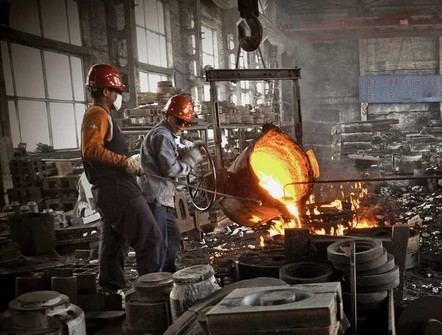Fission crystallizer is mainly used for old precision casting. Particularly, when casting quadrate ingot, the water jacket is separated from crystallizer. With the development of casting technique, crystallizer used for
modern precision casting is integrated. When use old crystallizer for casting, the cooling water consumption is quite high, because water supply on old crystallizer is not closed. Some cooling water is used for opening fire instead of cooling. What’s more, the distinction of cooling intensity between the first cooling and second cooling is quite large. Quality defect on some ingot castings is inevitable. When use modern crystallizer for casting, cooling water consumption is low. It is proven that the consumption is only about 70% of water consumption on old crystallizer. At present, low level crystallizer is mainly used in developed countries, in order to improve cooling intensity and reduce or eliminate heating in the gas gap area after the first cooling. So, quenching of the second cooling does not exist.
The requirements of cooling intensity on temperature cannot be ignored. In general, the temperature of cooling water is set at 20 centigrade. But, due to regional climate conditions, the distinctions of water supply conditions or workshop temperatures result in large variation, resulting in regional or climatic quality defect on ingot castings. The water supply system on modern crystallizer has pulse or cross disguised function, which are determined by technical program. So, the cooling intensity can be set as cure based on casting technique, especially aiming at hard alloy which has poor plasticity under low temperature. Cold cracks and hot cracks almost exist at the same time during precision casting. Equipped with water fender, surface temperature of ingot castings is improved to plastic temperature of stretcher strain, eliminating cold cracks. Moreover, in terms of technique, measures preventing hot cracks are adopted, then, high quality ingot castings are acquired.
Cooling intensity is also called as cooling velocity. Cooling intensity does not only has influences on cracks of precision casting, but also has influences on structure of ingot castings. With cooling intensity improving, the structure inside crystal is refined further. Moreover, sump depth of ingot castings becomes shallow. Sizes of transitional zone reduce, improving feeding conditions of metal. Besides, decrease or eliminate defects on ingot castings such as looseness and pores.
